When I started having problems with the width of the Brooks B17 on my roadbike, I received many excellent suggestions from readers. I also received a suggestion from several staff members at Harris Cyclery: a Gilles Berthoud. Bethoud saddles and luggage are made in France and are associated with exquisite randonneuring bicycles. It is generally agreed that their handlebar bags are the finest one can get, and several respected members of the industry describe the saddles as being "even better" than Brooks. However, I was both skeptical of that description and weary of the high price tag. When I returned to Harris Cyclery the following week, I still had not decided what saddle to get, and they suggested that I try the Berthoud and see what I think. So I now have the saddle on loan, and have ridden with it on my Bianchi roadbike.
The saddle I have is a Gilles Berthoud touring model, which is available in three different colours (black, natural and cork), with regular or titanium rails, and in either a man's or a woman's length. Mine is the woman's version, which is the same width as the men's (160mm), but with a shorter nose. You can read the detailed specs for these saddles here. The woman's model is called the "Marie Blanque"- after a short, steep climb in the French Pyrenees.
The Berthoud differs from Brooks and the other leather saddles available today in several ways. The leather is stretched using a different method - a modular system involving bolts instead of rivets. This system allows for the saddle to be taken a part and also for more control over tension adjustment. The leather is somewhat thicker than that of other brands.
The undercarriage consists of metal rails combined with a polycarbonate (plastic) rear support, which accommodates the proprietary Berthoud "Klikfix" saddlebag attachments. The openings can probably also be used with standard saddlebag straps, though I have not yet tried to attach one. This aspect is where the Berthoud saddles receive most of their criticism: "Not only is the saddle more expensive, but it has plastic parts?" However, both Berthoud and fans of the saddle insist that this construction method is superior in terms of comfort and adjustment possibilities, and is not prone to failure. I am cautiously open-minded on this, and would be curious to know the statistics of Brooks vs Berthoud saddle failure.
Another distinct feature of the Berthoud's design, is that the bolts (not rivets) are located behind and below the surface of the saddle - so that the cyclist's rear end does not come in contact with them no matter how far back they sit. This will make a huge difference to those who are bothered by the texture of the rivets on other leather saddles.
Finally, the very shape of the saddle is different than what I have gotten used to from Brooks. The Berthoud's surface platform is completely flat, whereas the surface of Brooks has "undulations" to it (some call it the "banana shape"). As a result, the Berthoud works best when mounted completely level - whereas I mount the Brooks with the nose pointing slightly up, in order to not slide forward.
An additional difference, is the Berthoud's relative lack of "side skirts" (compare it to the Brooks here). Despite being classified as a touring saddle, the leather on the Berthoud is closely trimmed along the sides - typical of a much more aggressive saddle in the Brooks range.
My experience riding on the Berthoud is limited to a short (12 miles or so) winter ride, but here are my impressions so far: The saddle felt "just right" out of the box and I simply forgot about it once I got on the bike and began cycling (no padded shorts). Because the Bianchi is a bit big on me, I am leaned forward on it considerably. The saddle did not feel too wide (it is 10mm narrower than a lady's Brooks B17) and my legs did not rub against the "side skirts". Because the Berthoud is level, the nose does not come into contact with any sensitive areas. With Brooks road saddles, I need to make a lot of adjustments to get this aspect just right - but the Berthoud seems to naturally stay away from that region. As I was cycling, I was not so much experiencing any of this, as not experiencing anything. I was taken with the winter scenery and genuinely forgot that I was supposed to be trying the saddle and forming impressions of it. There were no impressions, and only later did I realise that this in itself meant that the saddle was comfortable.
I have to admit that I am "emotionally biased" towards Brooks, which is an obstacle to recognising that the Berthoud suits me better - at least on roadbikes with considerable forward lean. The Berthoud basically gives me the width of a touring saddle with the side cut-outs of a racing saddle - plus the shape does not interfere with my "lady areas". In that sense, it is also more versatile, and I can see myself using it both on a touring bike and on a more aggressive roadbike. All this is exactly what I need. But... a $200+ saddle? I suppose that if I sell my spare Brooks B17S and the titanium-rail Brooks Finesse that I received in a trade but find unridable, that would give me the funds. But it still feels like an overindulgence and I need to think about it. Regardless of whether I keep the saddle or not, I hope this write-up was helpful to those considering a Berthoud.
 05:11
05:11
 kaniamazdar
kaniamazdar

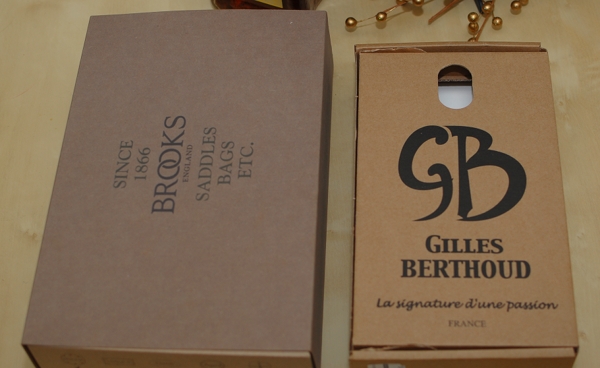

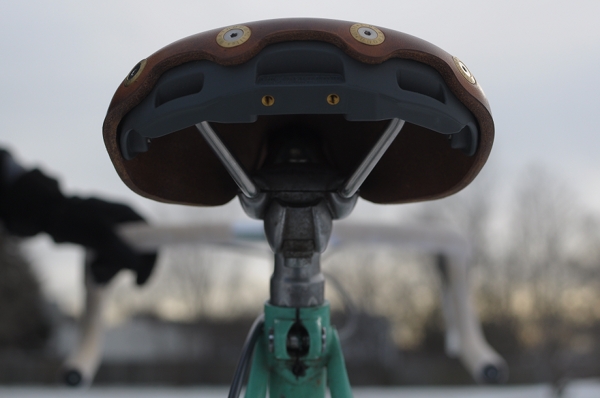
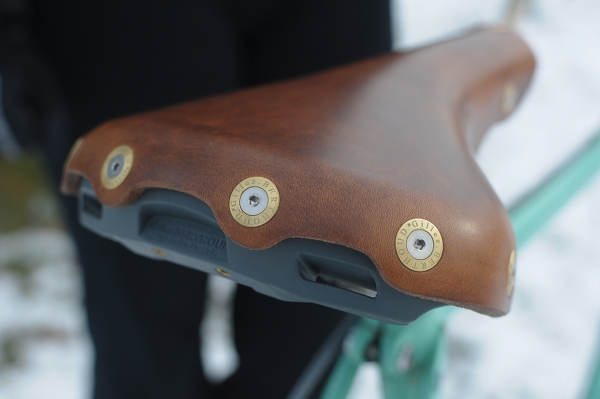
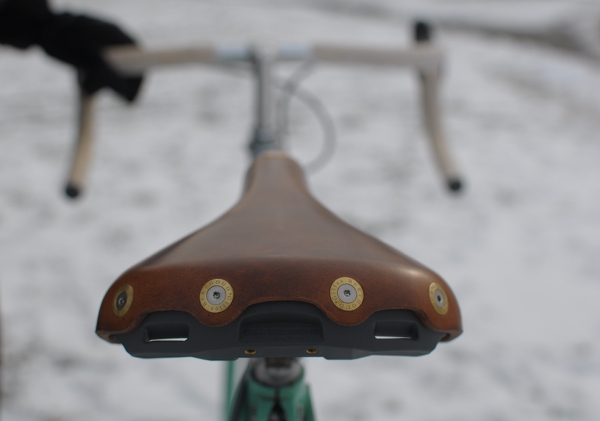
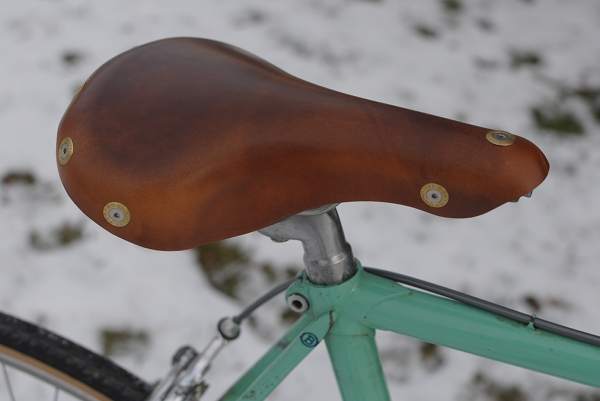
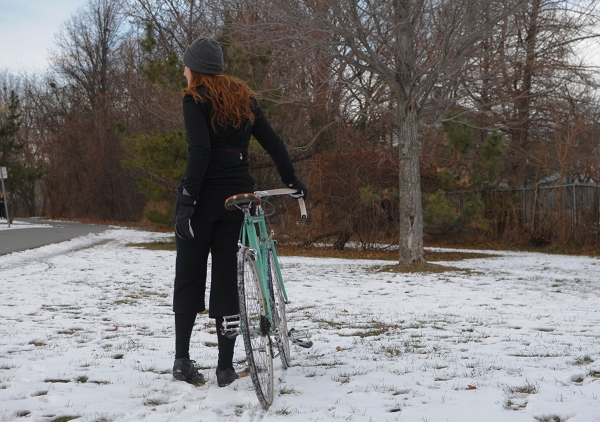
 Posted in:
Posted in: 













0 comments:
Post a Comment